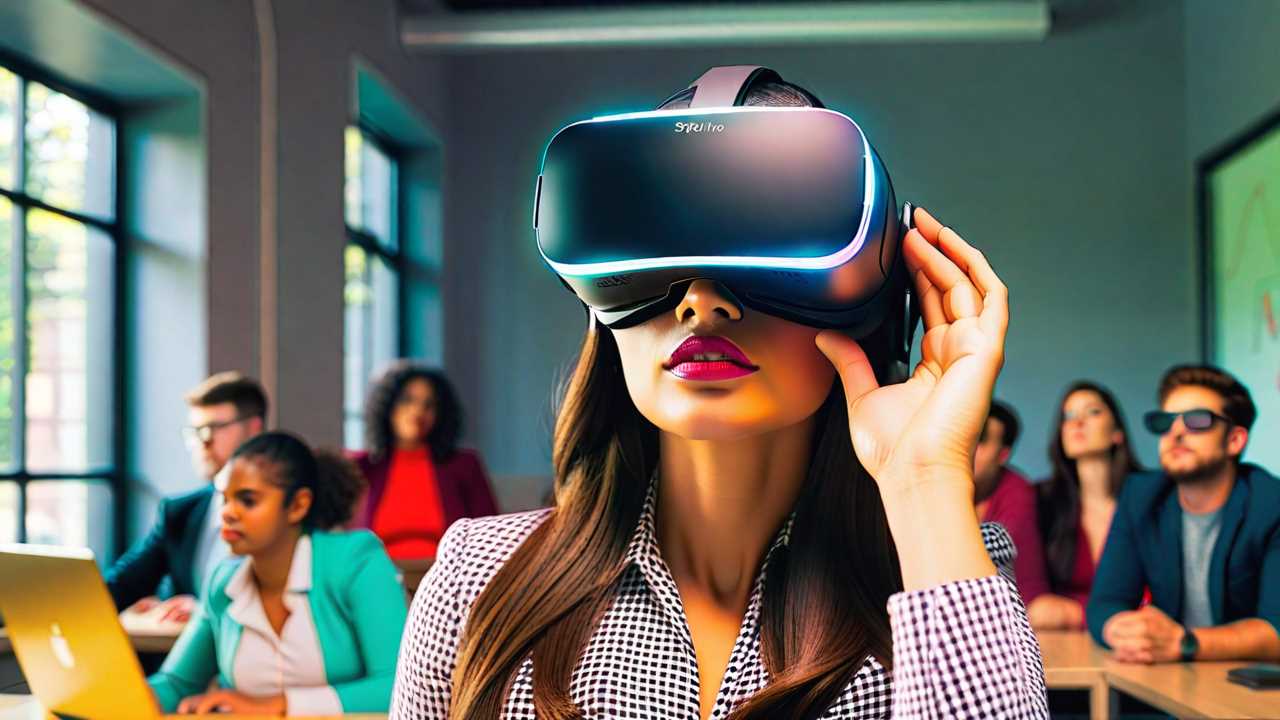Technology
How can virtual reality transform the education sector?

The advent of virtual reality (VR) technology has brought about a seismic shift in various industries, with the education sector standing at the forefront of this transformation. The potential of VR to revolutionize learning and teaching methodologies is immense, offering unprecedented opportunities for immersive learning, digital classrooms, interactive simulations, educational technology, VR engagement, and augmented reality. This article delves into how virtual reality is reshaping the educational landscape, making learning more engaging, effective, and accessible.
The Power of Immersive Learning
Immersive learning through VR technology creates a simulated environment that mirrors real-life scenarios or creates fantastical worlds for exploration. This hands-on approach to education enables students to experience history, science, art, and more in a way that textbooks simply cannot match. For instance, students can take a virtual field trip to ancient Egypt, dive into the human bloodstream to understand biology, or explore the universe, all from the comfort of their classroom. This level of immersion enhances comprehension, retention, and makes learning an exciting adventure rather than a chore.
Digital Classrooms: The Future of Education
Digital classrooms equipped with VR technology are breaking down geographical barriers, allowing students from different parts of the world to learn together and interact in a shared virtual space. This global classroom concept not only fosters cultural exchange but also democratizes education, making high-quality learning experiences accessible to students in remote or underserved areas. Furthermore, digital classrooms can be customized to suit different learning styles, ensuring that each student receives education in a manner that best suits their needs.
Interactive Simulations: A New Approach to Learning
Interactive simulations are a cornerstone of VR in education, offering students the chance to engage in practical exercises and experiments without the constraints of physical resources or safety concerns. For example, chemistry students can conduct complex experiments and observe reactions in a controlled virtual environment, while medical students can practice surgical procedures without the ethical implications of using real patients. These simulations not only provide practical experience but also allow for instant feedback and the opportunity to repeat processes until mastery is achieved, which is often not feasible in a traditional educational setting.
Educational Technology: Bridging the Gap
The integration of VR into educational technology is bridging the gap between traditional teaching methods and the digital generation. By incorporating elements of gamification and interactive media, VR makes learning more appealing to students who have grown up in a digital world. This technology also supports teachers by offering tools that track progress, personalize learning paths, and manage classrooms more efficiently. As educational technology evolves, VR is becoming an essential tool in the educator’s toolkit, transforming the way knowledge is delivered and absorbed.
VR Engagement: Making Learning Interactive
Engagement is critical to effective learning, and VR technology excels in making educational content interactive and captivating. Through VR, students are no longer passive recipients of information but active participants in their learning journey. This active engagement fosters deeper understanding, encourages critical thinking, and enhances problem-solving skills. Moreover, VR can cater to a wide range of subjects, from complex scientific concepts to historical events, making it a versatile tool in sparking curiosity and inspiring learning across disciplines.
Augmented Reality: Enhancing Education with Digital Overlays
While VR creates a fully immersive virtual environment, augmented reality (AR) blends digital elements with the real world, offering another layer of interaction in the learning process. AR can bring textbooks to life, with 3D models and animations popping up from the pages, providing a visual and interactive element to traditional learning materials. This technology can also be used in practical training, such as repairing machinery or conducting lab experiments, where digital overlays provide additional information, guidelines, or step-by-step instructions, enhancing the learning experience.
In conclusion, the transformative potential of virtual reality in the education sector is boundless, offering innovative solutions to age-old challenges in learning and teaching. By making education more immersive, interactive, and accessible, VR and AR technologies are not just changing how we learn but also redefining what it means to be educated. As these technologies continue to evolve and become more integrated into our educational systems, the future of learning looks brighter and more exciting than ever. The journey of education through virtual reality is just beginning, and it promises to lead us to a world where learning knows no bounds.
Hey there! I’m William Cooper, your go-to guy for all things travel at iMagazineDaily. I’m 39, living the dream in Oshkosh, WI, and I can’t get enough of exploring every corner of this amazing world. I’ve got this awesome gig where I blog about my travel escapades, and let me tell you, it’s never a dull moment! When I’m not busy typing away or editing some cool content, I’m out there in the city, living it up and tasting every crazy delicious thing I can find. Join me on this wild ride of adventures and stories, right here at iMagazineDaily. Trust me, it’s going to be a blast! 🌍✈️🍴